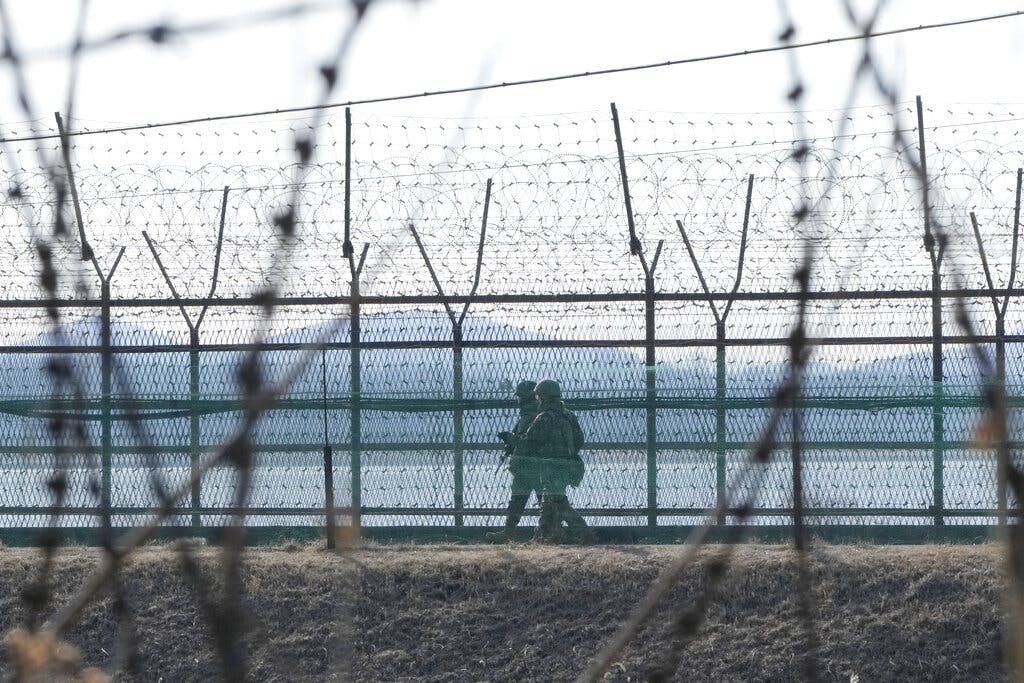North Korea’s Provocations Have South Korea Again Calling It the ‘Enemy’
The use of the ‘e-word’ represents a reversion to the era in which South Korea’s defense ministry routinely applied that term after the North in 1995 vowed to turn the South into ‘a sea of flames.’

Let there be no doubt: North Korea is the “enemy” of South Korea. While previous South Korean governments avoided applying such a nasty word to the North Korean leadership, the South’s military leaders now believe Pyongyang isn’t giving them much choice.
If the North’s dictator, Kim Jong-un, insists on test-firing missiles while threatening to destroy the South with nuclear warheads, what else to call the regime? With that reality firmly in mind, the South’s defense ministry is calling North Korea the “enemy” in its annual white paper rather than the words it used last year, “close neighbor.”
The reasoning was basic: tit for tat. Because the North’s ruling party declared the South under its conservative president, Yoon Suk-yeol, the “undoubted enemy,” as well as threatening the South militarily and refusing to give up its nuclear weapons, Mr. Kim’s government definitely should be classified as “our enemy,” the ministry said.
The use of the “e-word” represents a reversion to the era in which South Korea’s defense ministry routinely applied that term after the North in 1995 vowed to turn the South into “a sea of flames.” South Korea under Mr. Yoon has intensified military exercises with the Americans, reversing the policies of his liberal predecessor, Moon Jae-in, who failed at reconciliation.
Since the 1990s, grandstanding efforts at normalizing North-South relations have moved in cycles, as has the whole question of whether to apply the “enemy” label to the North Korean regime.
The term was abandoned while South Korea under Kim Dae-jung, the president between 1998 and 2003, pursued his “Sunshine policy” of reconciliation with the North. His successor, Roh Moo-hyun, also sought reconciliation during his five years as president. Kim and Roh, both of whom died in 2009, went to Pyongyang for summits with Kim Jong-un’s father, Kim Jong-il, who died two years later.
By then, “Sunshine” had faded under conservative presidents elected by voters disillusioned by the North’s failure to compromise in talks hosted by China that also included America, Japan, and Russia.
The sinking in 2010 of a South Korean navy vessel with a loss of 46 crew members and the shelling of a small South Korean island several miles off the North’s southwestern coast, killing four people, added to the disillusionment. Again, the North was the “enemy.”
In another time of high hopes, though, Mr. Moon banned the use of the word by the defense ministry. In April 2018, Mr. Moon met Mr. Kim on the North-South line at Panmunjom, where the Korean War truce was signed in July 1953, and President Trump met Mr. Kim in Singapore two months later in a mood of boundless optimism.
Mr. Kim, though, left no doubt the North would never give up its nukes and missiles. His second summit with Mr. Trump, at Hanoi in February 2019, broke up in failure.
Mr. Kim has not ordered a nuclear test since September 2017 but last year staged nearly 100 missile tests, including that of a long-range Hwasong-17 that he witnessed in November with his 10-year-old daughter, Ju-ae.
The latest white paper reports the North’s steady advances. “North Korea has continued the test-firing of solid-propellant ballistic missiles,” it said. These can be moved faster from hiding places in caves and caverns and are easier to control in flight than liquid-fuel missiles.
On the ground, the North has nearly 1.3 million troops, the white paper said, compared with 500,000 in the South’s armed forces. More than half of the North’s forces are close to the demilitarized zone between North and South Korea — a more immediate threat than the North’s nukes, which many believe Mr. Kim would never fire knowing what would descend on him and his regime in retaliation.
No one doubts, though, Mr. Kim has specific targets in mind for his tactical nukes. At the top of the list would be Camp Humphreys, the huge base 60 miles south of the DMZ that’s headquarters for America’s 28,500 troops in South Korea.

